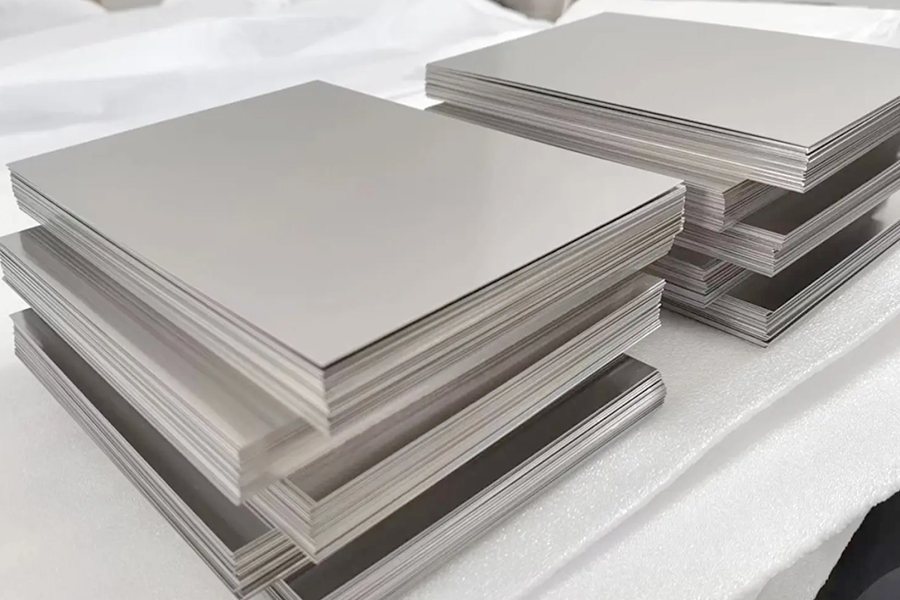Titanium alloys are renowned for their impressive strength-to-weight ratio, corrosion resistance, and high-temperature performance, which makes them indispensable in industries ranging from aerospace to medical implants. However, when designing components that need to withstand repeated loading cycles—such as aircraft wings, engine parts, or prosthetic devices—fatigue strength becomes a critical factor. Fatigue strength refers to the ability of a material to endure cyclic loading without failing, and in the case of titanium alloys, several key factors influence their fatigue performance. Understanding these factors and optimizing them for specific applications is crucial to ensuring the longevity and reliability of titanium components in demanding environments.
The microstructure of titanium alloys plays a significant role in determining their fatigue strength. Titanium alloys are generally categorized into four types based on their crystallographic structure: industrial pure titanium, α and near-α alloys, α+β alloys, and β and near-β alloys. Each of these types has distinct properties that affect their fatigue resistance. For example, α and near-α titanium alloys, which are predominantly composed of the α-phase (hexagonal close-packed structure), typically exhibit good fatigue resistance due to their fine-grained microstructure. These alloys are often used in high-performance aerospace applications, such as turbine blades or compressor components, where resistance to cyclic loading is essential. On the other hand, β titanium alloys, which are more ductile and have a body-centered cubic structure, may have lower fatigue strength under certain conditions but are highly effective in environments where high-temperature resistance and corrosion resistance are critical.
The fatigue strength of titanium alloys is also heavily influenced by their alloying elements. Titanium’s inherent fatigue resistance can be enhanced by adding elements like aluminum, vanadium, and molybdenum. For instance, the addition of aluminum to titanium alloys increases their strength and promotes the formation of the α-phase, improving fatigue properties at lower temperatures. Similarly, vanadium helps stabilize the β-phase and enhances the high-temperature fatigue strength of titanium alloys. However, too much alloying can lead to embrittlement or undesirable phase transformations that can negatively impact fatigue life. Therefore, achieving the right balance of alloying elements is essential to optimize fatigue strength for specific applications. In practice, manufacturers often tailor the alloy composition to meet the specific demands of the application, whether it’s high-stress aerospace components or more general industrial uses.
Another key factor influencing the fatigue strength of titanium alloys is the presence of microstructural defects or inclusions, which can act as stress concentrators and significantly reduce the material's ability to withstand cyclic loading. The manufacturing process itself can influence the formation of these defects. For example, titanium alloys are often subject to hot working processes such as forging, which can introduce microcracks or residual stresses that weaken the material. These microstructural flaws are particularly problematic in applications where the component will be subjected to high or fluctuating loads. To mitigate the risk of fatigue failure, careful control of the manufacturing processes is essential. Techniques like precision casting, controlled cooling, and post-processing heat treatments can help refine the microstructure, reduce defects, and enhance the material's overall fatigue resistance.
Heat treatment is another powerful tool for optimizing the fatigue strength of titanium alloys. By controlling the cooling rates and annealing processes, manufacturers can manipulate the size and distribution of the α and β phases within the alloy. For example, in α+β titanium alloys, which contain a mixture of both phases, adjusting the heat treatment conditions can improve the alloy's ductility and toughness while enhancing its fatigue resistance. Similarly, solution treating and aging processes in β alloys can strengthen the material by precipitating phases that improve its load-bearing capacity. Heat treatment also helps relieve residual stresses introduced during manufacturing, further reducing the risk of premature fatigue failure. However, the heat treatment parameters must be carefully selected to ensure that they do not compromise other properties, such as toughness or corrosion resistance.
Surface treatments are also critical for improving the fatigue life of titanium alloys. Since fatigue failures often initiate at the surface due to stress concentrators, implementing surface modifications like shot peening, surface hardening, or coating with wear-resistant materials can greatly enhance fatigue resistance. Shot peening, for example, induces compressive residual stresses on the surface of the material, which helps to counteract the tensile stresses that often lead to crack formation during cyclic loading. In addition, titanium alloys can be coated with various materials, such as ceramic or metallic coatings, to further protect against surface wear and reduce the likelihood of crack initiation. These treatments are particularly useful in components exposed to high-frequency cyclic stresses, like compressor blades in jet engines or orthopedic implants that undergo repetitive loading in the human body.

Finally, environmental factors such as temperature and exposure to corrosive environments can significantly affect the fatigue strength of titanium alloys. Titanium is known for its excellent corrosion resistance, but in aggressive environments like seawater or acidic solutions, fatigue resistance can be compromised due to stress corrosion cracking. In aerospace or marine applications, where titanium alloys are exposed to such conditions, selecting the right alloy composition, combined with appropriate surface treatments or coatings, is essential for maintaining both corrosion resistance and fatigue strength. Similarly, exposure to extreme temperatures, both high and low, can cause phase changes or embrittlement in titanium alloys, leading to reduced fatigue resistance. Therefore, a comprehensive understanding of the operating environment is necessary when optimizing titanium alloys for specific applications.
Optimizing the fatigue strength of titanium alloys requires a nuanced approach that considers their microstructure, alloy composition, manufacturing processes, and environmental factors. By tailoring these elements, manufacturers can develop titanium components with superior fatigue resistance, making them suitable for demanding applications in aerospace, medical, automotive, and other industries. With advancements in alloy design, heat treatment techniques, and surface modification processes, the fatigue performance of titanium alloys continues to improve, enabling them to meet the rigorous demands of modern engineering applications.


 English
English русский
русский عربى
عربى 中文简体
中文简体
